From Good to Great: How Online Schools Can Improve Customer Service and Student Success

Imagine your new motivated student opens the first lesson of the freshly-purchased course. How exciting! But the page keeps showing the error. They turn to your school support and get dead silence.
A nightmare. For both you and your student.
If your online school doesn’t provide effective support, your students may struggle to resolve their issues and become frustrated or discouraged. This could ultimately impact their academic success and retention in the program.
Thus, effective customer service in online schools ensures that technical issues or other challenges don’t hinder student success.
What is customer service in schools?
Customer service in online schools refers to activities that provide students personalized, responsive, and transparent support. It includes technical assistance, academic advising, counseling services, and creating a supportive online learning environment that fosters student success.

Effective customer service in online schools can help improve student engagement, satisfaction, and retention rates and make your school stand out in the competitive online education market.
Why customer service in schools is important
With the rise of online education, institutions must prioritize responsive and personalized customer service to ensure student success.
According to a report by Quality Matters, students who receive effective and responsive customer service are more likely to feel engaged and satisfied with their online courses. The report found that
78% of students who received high-quality customer service reported feeling satisfied with their online courses, compared to only 38% of students who received poor customer service
In addition, a survey by Learning House found that 62% of students who were satisfied with their online courses said that the availability of technical support was a significant factor in their satisfaction. Effective customer service, including technical support, can help to improve student satisfaction and engagement with online courses.
Furthermore, a report by the Online Learning Consortium found that student retention rates in online programs were higher when institutions provided proactive support to students. This includes providing personalized outreach and support to students struggling with coursework or facing personal challenges.
Summing up, here’s why you should invest in high-quality customer service 👇
- Improved student satisfaction: Customer service provides timely and effective communication, resources, and support, making students feel more comfortable and confident.
- Increased student engagement: Effective customer service helps create a supportive and welcoming learning environment.
- Improved student retention: Schools can reduce transfer activity and increase student motivation by providing personalized and responsive customer service.
- Positive reputation: Good customer service leads to the trust of current and potential students, which can increase enrollment and student retention rates.
- Competitive advantage: In today’s competitive education market, schools prioritizing customer service can stand out and become a leader in the industry.
- Higher academic success: By addressing student needs and concerns, schools can improve academic success rates and help students reach their full potential.
- Better stakeholder relationships: Prioritizing the needs of students and providing high-quality customer service can help grow the trust and loyalty of students and the community.
- Increased revenue: Schools can increase revenue and financial stability by improving student retention rates and reputation.
Examples of good customer service in schools
Certainly, here are some examples of educational brands providing outstanding customer service:
- Khan Academy: It’s an online educational platform that offers free courses and educational resources to students of all ages. They have a team of dedicated volunteers who provide personalized support to students, answering questions and providing feedback on their coursework.
- Coursera: This online learning platform offers courses and degrees from top universities and institutions worldwide. They provide responsive and personalized customer service, including technical support, course guidance, and academic advising.
- Udacity is an online learning platform that offers courses and degree programs in technology and business. They provide personalized student support, including academic advising, career services, and a community of mentors and peers.
- Duolingo: This famous language learning app offers free language courses in various languages. They ensure personalized customer service with online support forums and a team of experts who answer student questions.
- MasterClass is an online education platform offering courses by industry experts and celebrities. Their student support includes access to a community of peers, mentors, and a team of experts who can answer any course-related questions.
Want to keep up with the leaders?
Let’s take a look at key points of successful customer service strategy 👀
9 ways to improve customer service in schools
Offer multichannel support
Provide students multiple ways to communicate with the school, such as email, phone, website, socials, and messengers. Integrate communication channels so your support team can quickly move between channels without losing their conversation history or progress.

And, of course, monitor all the communication channels regularly to ensure student inquiries are addressed promptly and effectively.
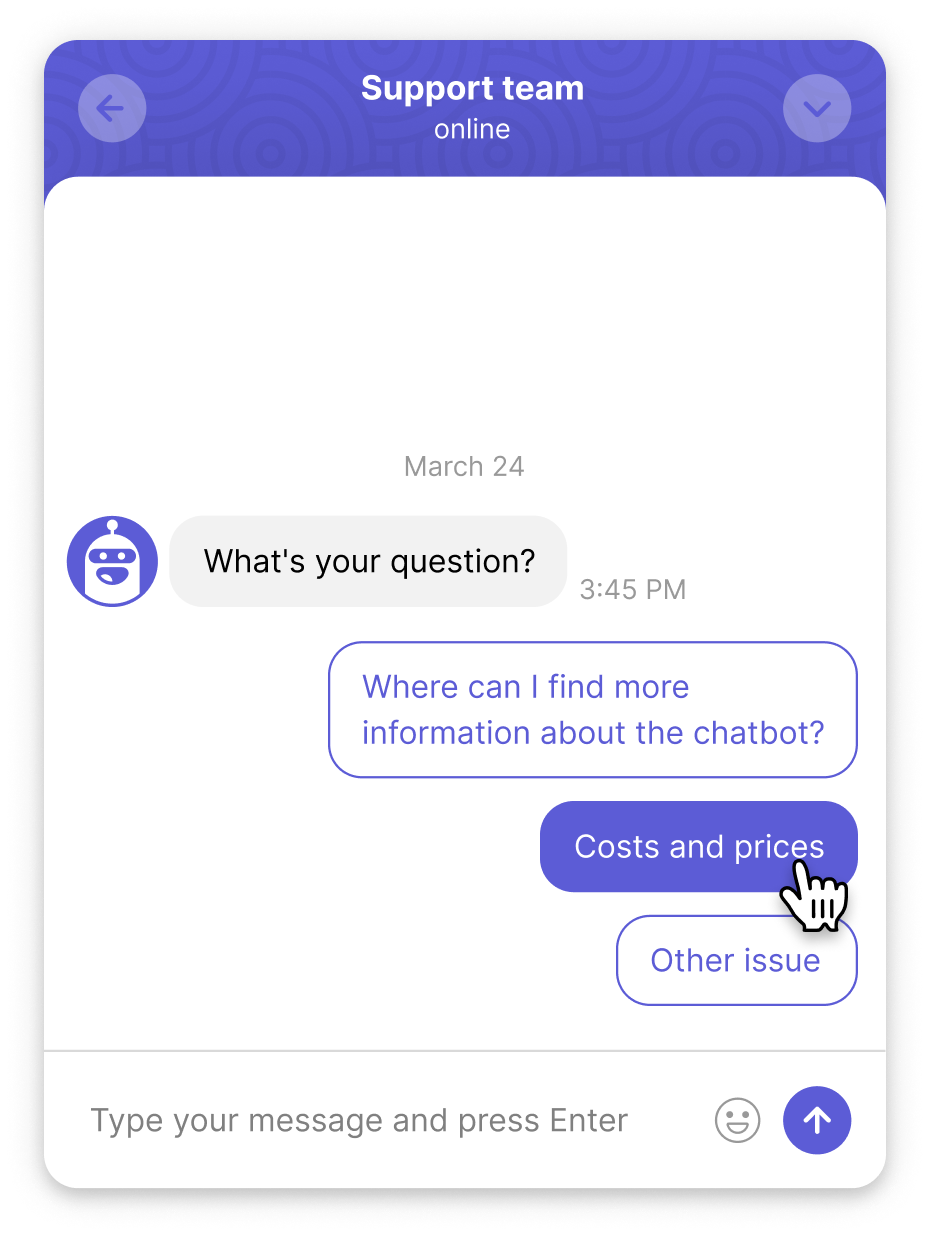
Provide self-service options
Allow students to look for info, not wait for your team to reply. You can use an FAQ chatbot that deals with the most typical queries or create a knowledge base with explanatory articles.
Add video tutorials and guide to make their search even more accessible.
Personalize communication
Use data and analytics to personalize student communication, providing relevant and timely information. They should feel a real person is talking to them on the other side of the screen.
For example, in dashly, support agents have access to all the info about a student:
- visited pages where they come from, what pages they viewed, what CTAs they clicked;
- orders;
- interests;
- conversation history;
- location;
- contact data, etc.
Thus, you can track visitors’ behavior and interactions with your company. Always have it at your hands in the Lead Card.
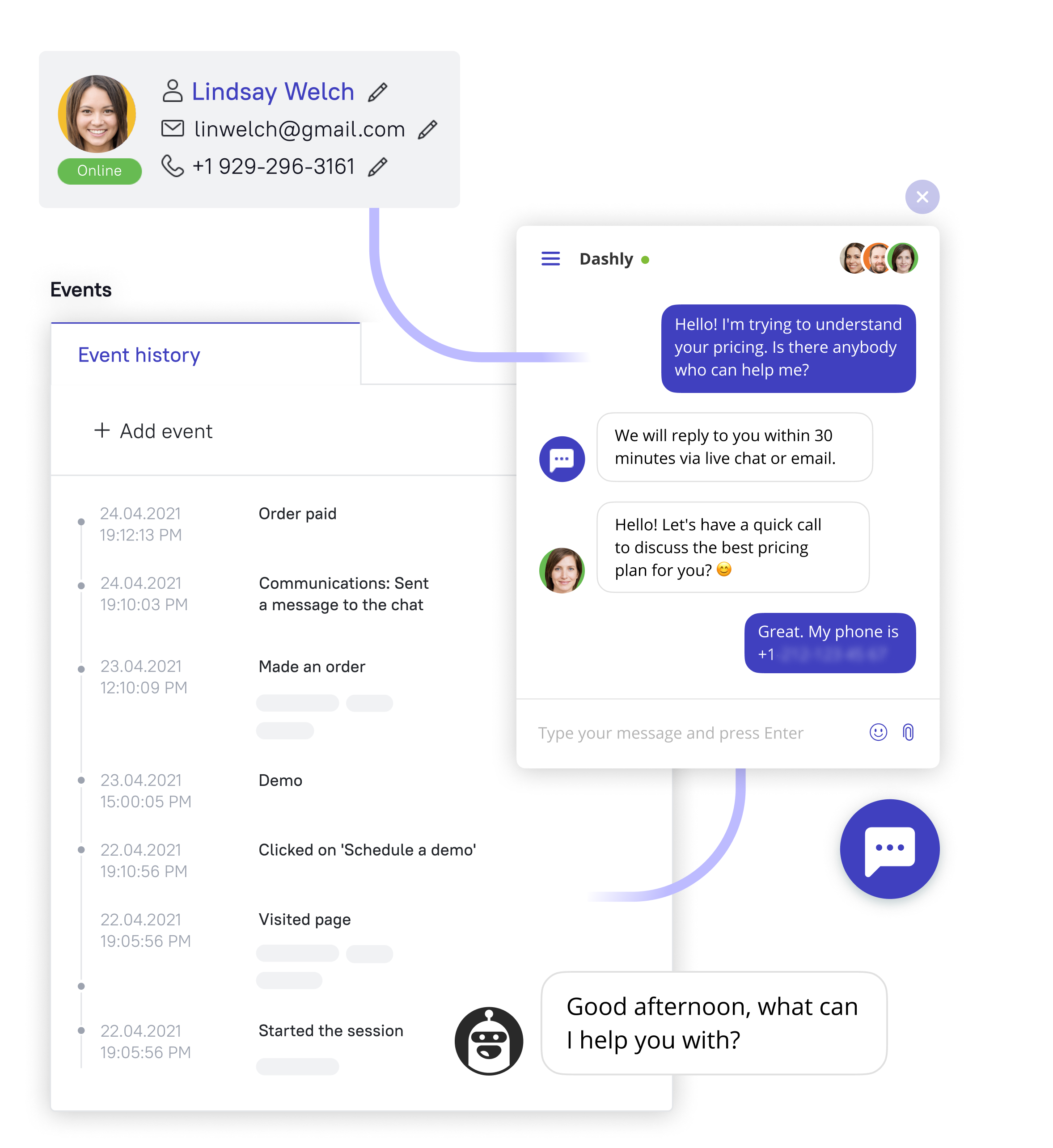
Train staff
Provide customer service training to your team to ensure they understand the importance of customer service and how to support students effectively. Teach them how to manage multiple channels and provide personalized support.
Prioritize urgent inquiries
You never know when the emergency will happen. To manage workload, provide in-time support, prioritize urgent inquiries, and provide a separate channel for burning issues.
Use templates
Use templates for common inquiries to help staff respond quickly and efficiently. They can be saved replies in a chat, ready-to-use emails, etc.
Arrange 24/7 support
Provide support outside regular business hours, such as evenings and weekends, to ensure students receive timely responses. To do it, you can set up a chatbot. It will deal with typical questions or catch leads for you 24/7 and won’t even ask for coffee ☕
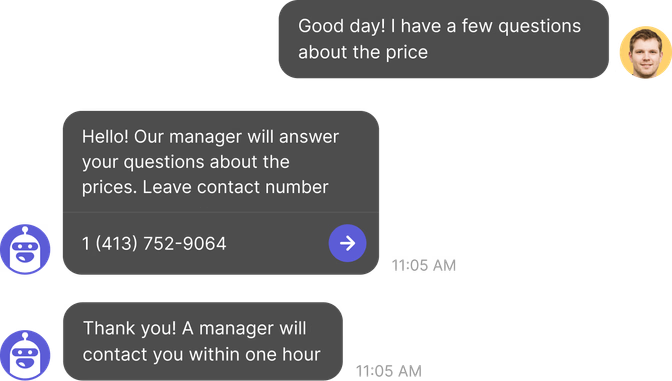
Be transparent
Ensure that information related to courses, academic programs, tuition fees, and policies is transparent and easily accessible to students. You can do it on the course pages and the knowledge base articles. By having it on your website, your students can find relevant info on their own or your managers can share a relevant article link with them in the chat:
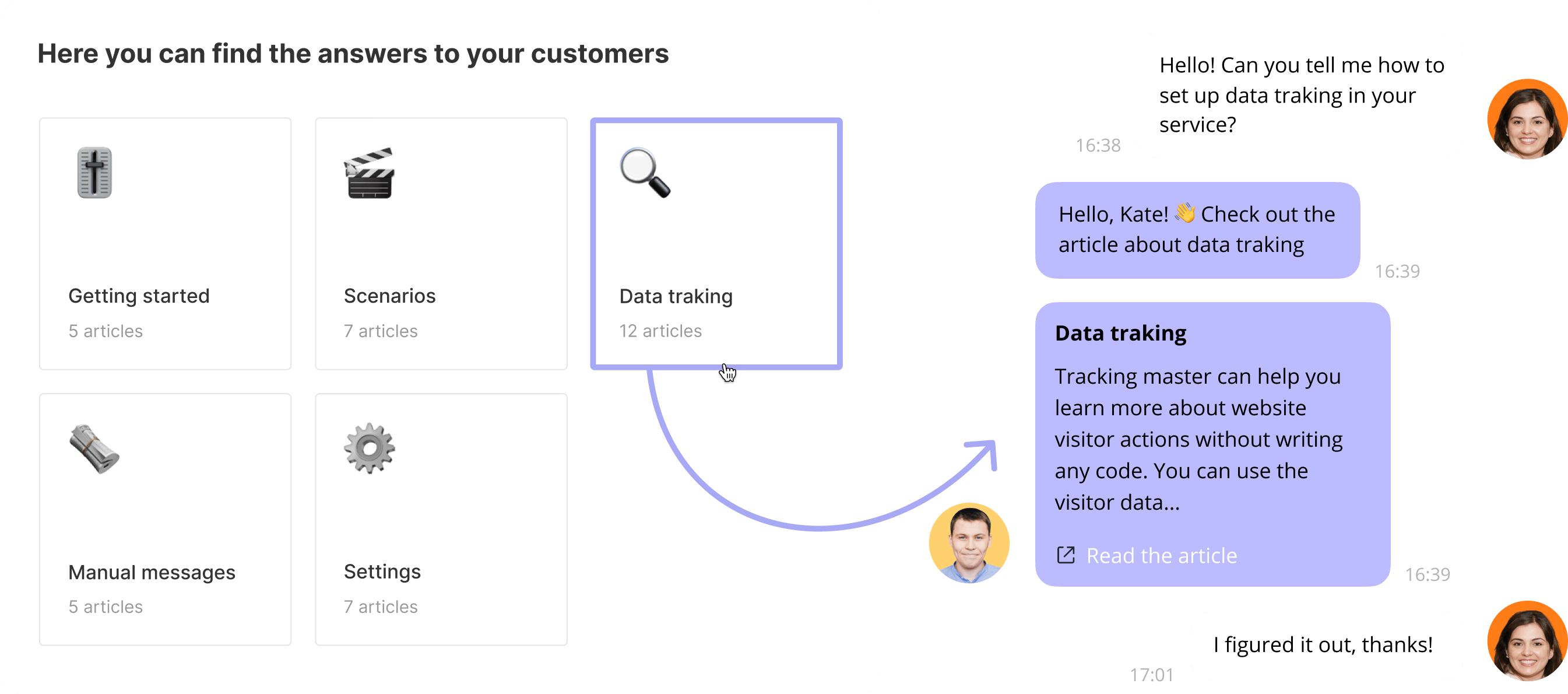
Dashly knowledge base example. Discover how it works.
Collect feedback
Regularly conduct feedback surveys to understand student needs and concerns and make improvements accordingly. There are plenty of ways to collect opinions. Here are a few examples:
- Surveys: Conduct surveys, such as online surveys or email surveys, to gather feedback from students about their experiences with the school.
- Focus groups: Conduct focus groups with students to gather in-depth feedback and insights.
- Social media: Monitor social media platforms to gather feedback and respond to comments and reviews.
- Online reviews: Regularly check online review sites, such as Google or Yelp, to know what students think of your work.
- Feedback forms: Provide feedback forms on the school website to collect feedback at any time. You can also launch an FAQ chatbot. It’s interactive and takes less time to complete.
- Net Promoter Score (NPS): Use NPS surveys to measure student satisfaction and loyalty.
- Exit interviews: Conduct interviews with students leaving the school to gather feedback and understand why they are leaving.
Now, which tools can help your online school achieve top-notch customer service?
7 tools of customer service in schools
Online schools require a variety of customer service instruments to effectively provide support to students. Here’s what you’d like to include in your toolset:
- Helpdesk software allows schools to manage and track student inquiries and support tickets, promptly addressing all queries.
- Live chat: This software allows schools to provide real-time student support on a website, answering questions and providing assistance in real-time. As if your students chat with you in a messenger. Integrate your live chat with socials and messengers to address all queries within one inbox.
- Video conferencing software: It helps schools provide virtual face-to-face support to students, such as academic advising or counseling services.
- Knowledge base: This software allows schools to provide self-service options, such as FAQs and online resources, so students can find answers to their questions quickly and easily without your support’s involvement.
- Chatbots: They help provide instant support and assistance to students, even outside regular business hours and without human involvement — shorter response time for students and less workload for your team.
- Customer relationship management (CRM) software: Implement a CRM system that integrates all communication channels and tracks student interactions, providing a complete view of each student’s experience
- Feedback and survey software: Feedback and survey software allows schools to collect feedback and insights from students and make improvements accordingly.
As you see, online schools need a range of tools to effectively support students. But they will help you ensure a positive customer experience.
To sum up: Where to start?
A go-to guide for improving customer service in online schools could include the following steps:
- Assess your current situation: Conduct a review of current customer service practices and identify areas for improvement.
- Develop a customer service plan: Develop a strategy that is based on responsive and personalized support for students, and addresses the areas for improvement.
- Train staff: Train staff on customer service best practices and provide ongoing support and coaching.
- Implement new policies and tools: Work out new policies that prioritize customer service and pick the best tools to deal with student’s concerns more effectively.
- Monitor and evaluate: Track the effectiveness of the customer service plan and make improvements when necessary.
I get that it’s a lot to take. But we in Dashly are happy to help you make first steps to superior customer service in your online school. With Dashly, you can:
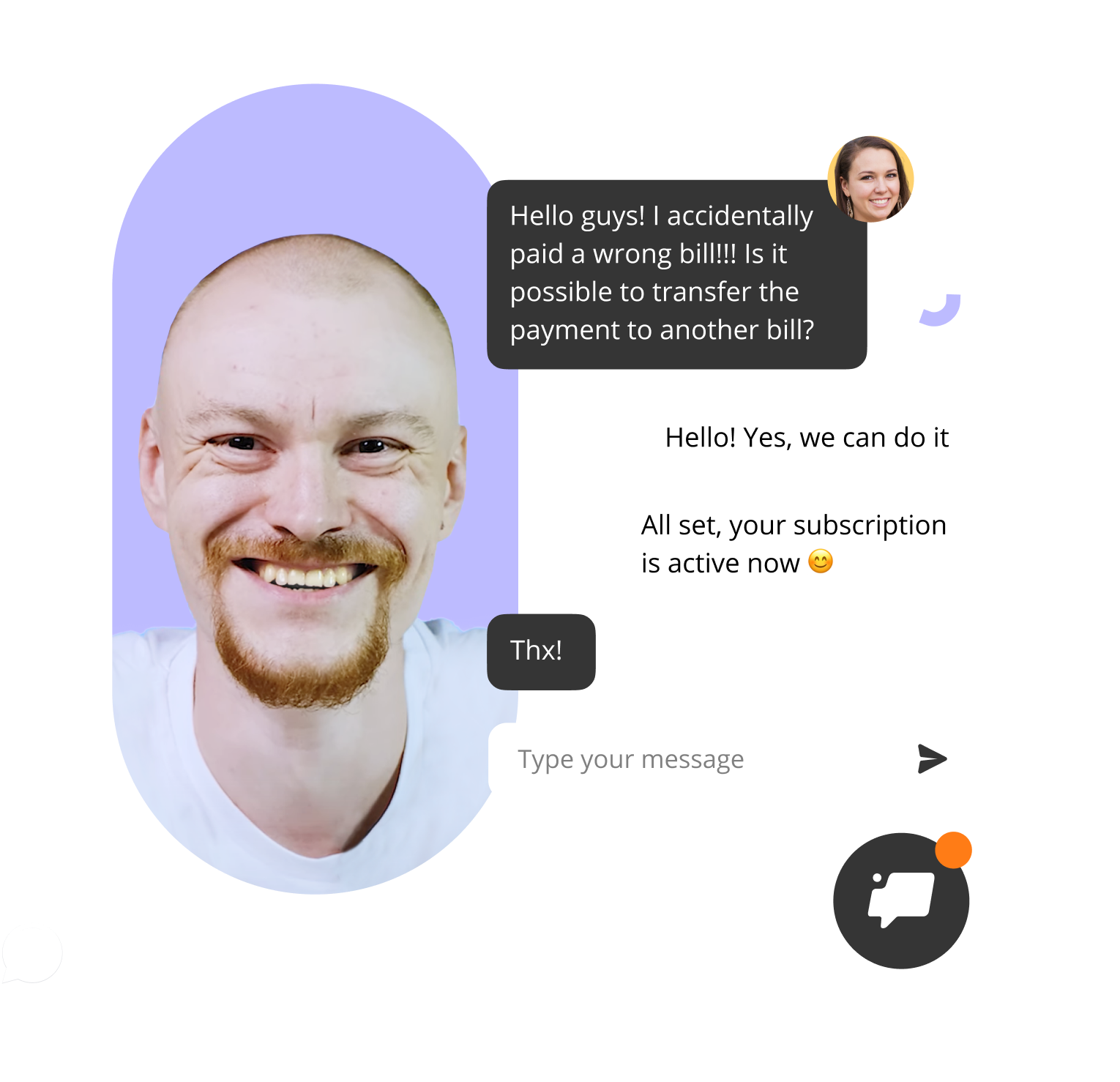
Read also:
- Top 10 customer segmentation tools to personalize customer communications
- 10 best website personalization tools to deliver top-notch visitors experience
- 16 best CX customer experience tools: software features and pricing


![36 ready-made scenarios of triggered campaigns for online schools [education]](https://www.dashly.io/blog/wp-content/uploads/2022/12/путеводитель-по-маркетингу-720x317.jpg)

